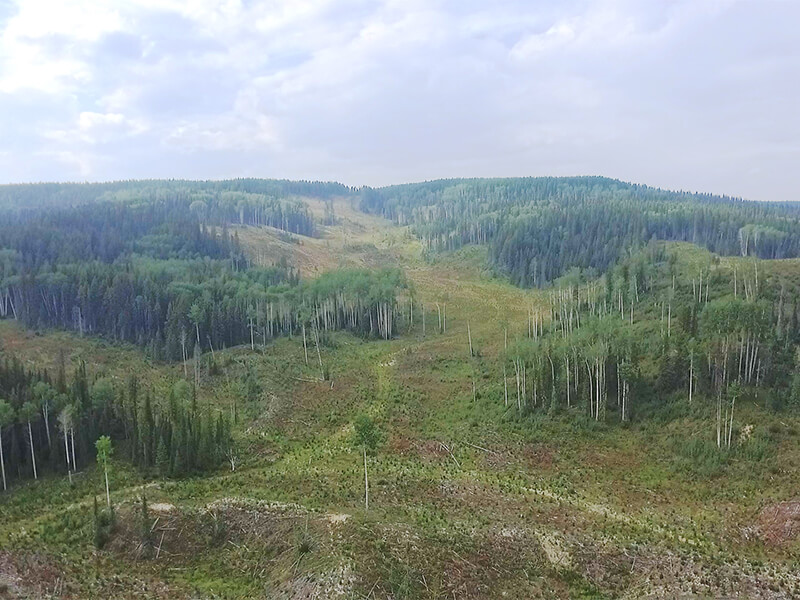
Abstract
Grizzly bear (Ursus arctos) populations residing in interior ecosystems of North America are known to frequent harvested areas and areas burnt by wildfires, as both disturbances encourage growth of early seral vegetation preferred by them. This is especially evident in places where there is a paucity of large natural openings and areas with a long history of wildfire suppression, such as the foothill forests of west-central Alberta. Little has been done, however, to directly quantify and compare grizzly bear food-supply in both disturbance types and at early stages of forest regeneration. In this paper, we explore whether harvested areas can act as surrogates to wildfires for grizzly bear food-supply in west-central Alberta, Canada. We sampled known fruit-bearing and herbaceous grizzly bear foods for their occurrence, productivity, and digestible energy supply among post-harvest, post-fire, and mature forests disturbance types, and across very young (~5 yrs), young (~20 yrs), and mid (~60 yrs) age-classes for post-harvest and post-fire disturbances. A variety of foods occurred at greater frequency in post-harvest stands, with the occurrence of most foods explained by the main effects of disturbance and age-class, or in combination with one environmental covariate. Overall, fruit productivity and digestible energy from fruits were highest in the young age-class, whereas forb productivity and digestible energy from forbs were highest in the very young age-class. There were no significant differences in total available digestible energy (fruit + forb) between post-harvest and post-fire stands within any age-class, but significant differences were evident between age-classes. These results suggest that harvested areas can potentially act as a surrogate to wildfires in relation to grizzly bear food-supply, but human access remains a key challenge for harvests given their association with roads. We suggest that harvested areas could be used as management tool to maintain or enhance grizzly bear food-supply and thus contribute to population recovery efforts, especially in areas of wildfire suppression.
Read the full paper here.
Citation
Souliere, C. M., Coogan, S. C. P., Stenhouse, G. B., & Nielsen, S. E. (2020). Harvested forests as a surrogate to wildfires in relation to grizzly bear food-supply in west-central Alberta. Forest Ecology and Management, 456, 117685. doi:10.1016/j.foreco.2019.117685






